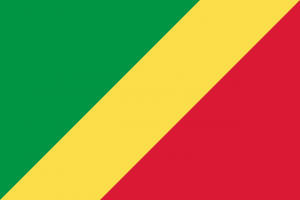Difference between revisions of "Language/Lingala/Grammar/Verb-to-be"
| Line 6: | Line 6: | ||
Here's a table of pronouns with their corresponding forms for the verb "to be": | Here's a table of pronouns with their corresponding forms for the verb "to be": | ||
{| class="wikitable | {| class="wikitable" | ||
|- | |- | ||
|Pronoun || Verb "To Be" (stem form) | |Pronoun || Verb "To Be" (stem form) | ||
Revision as of 21:50, 27 March 2023
In Lingala, the verb "to be" is often represented as "za(li)". The verb can be used in conjunction with various pronouns to form sentences. The 'li' verb ending is often omitted in daily conversations.
Here's a table of pronouns with their corresponding forms for the verb "to be":
| Pronoun | Verb "To Be" (stem form) |
| I (Ngai) | na |
| You (Yo) | o |
| He/she (Ye) | a |
| It | e |
| We (Biso) | to |
| You (plural, Bino) | bo |
| They (Bango) | ba |
Here are some examples using the verb "to be" with various pronouns:
I am strong > Ngai > Naza(li) makasi
You are short > Yo > Oza(li) mukuse
He/she is here > Ye > Aza(li) awa
It is good > Eza(li) malamu
We are young > Biso > Toza(li) bilenge
You are far (plural) > Bino > Boza(li) musika
They are nice > Bango > Baza(li) kitoko
Examples without the 'li' verb ending:
I am a man > Ngai > Naza mobali (instead of 'Nazali')
She is a woman > Ye > Aza mwasi (instead of 'Azali')
Other Lessons
- The Past Tense To Be
- Prepositions
- Past progressive tense
- The present tense To be
- Irregular verbs – kolia – to eat
- Gender
- The First 10 Verbs
- The first 10 words
- Irregular verbs – koya – to come
- Personal pronouns
